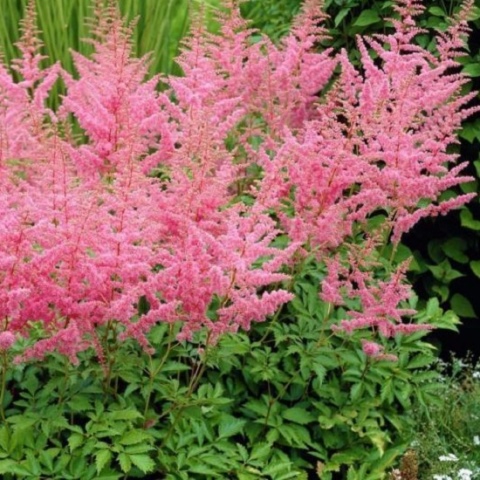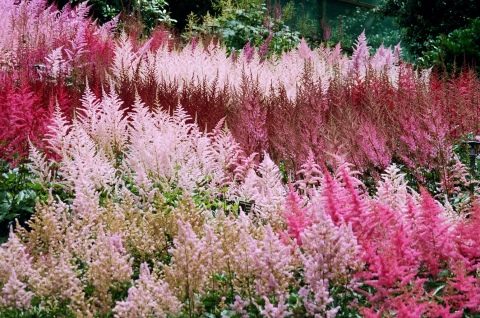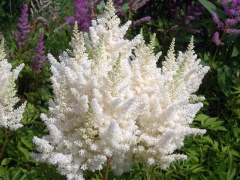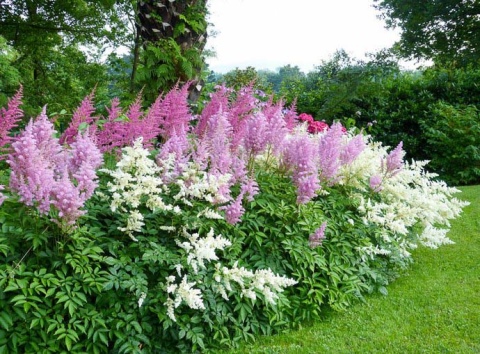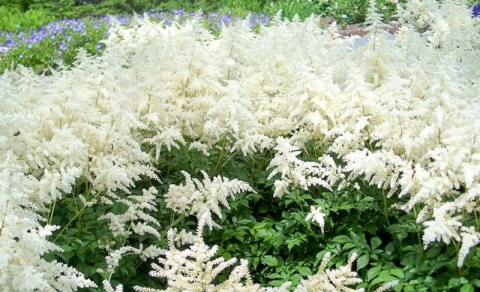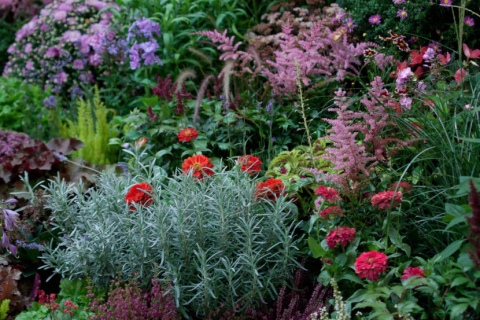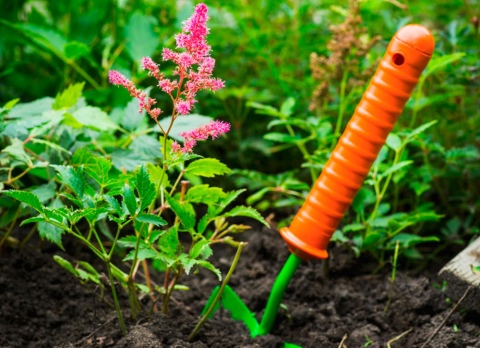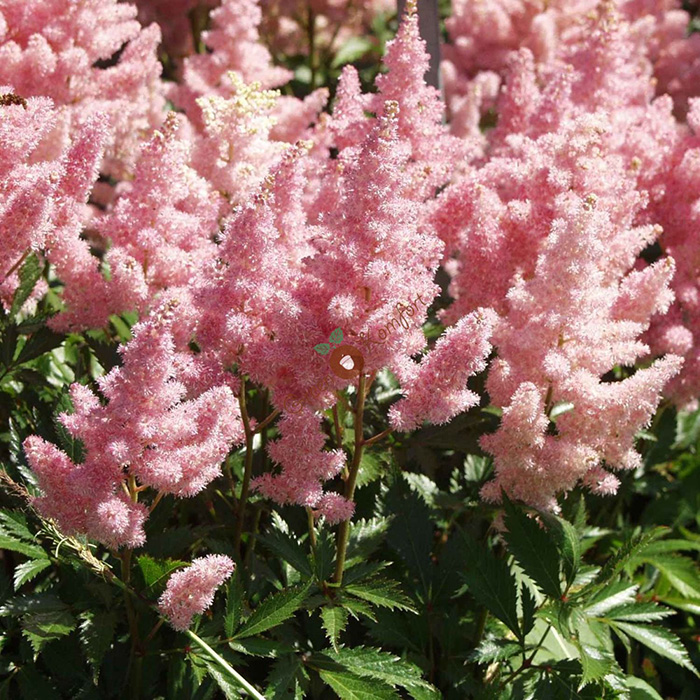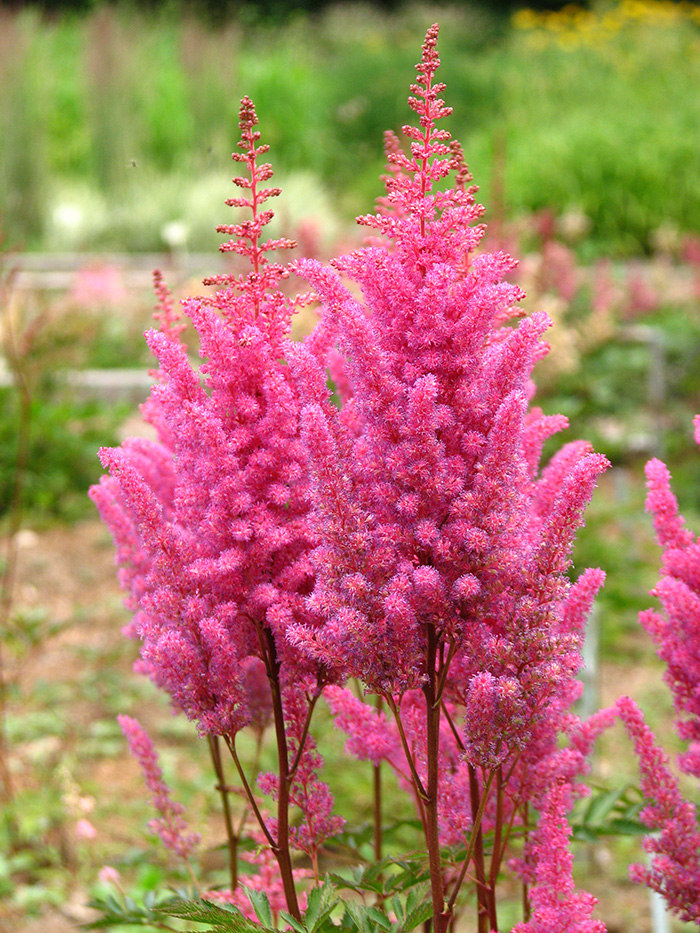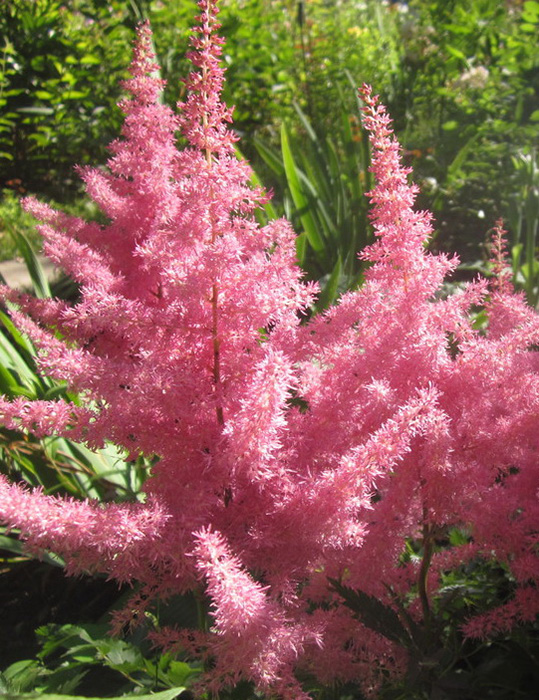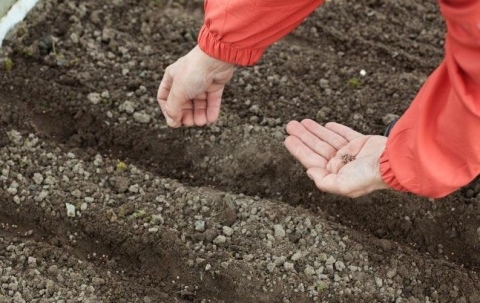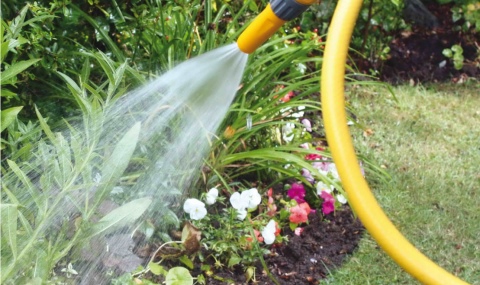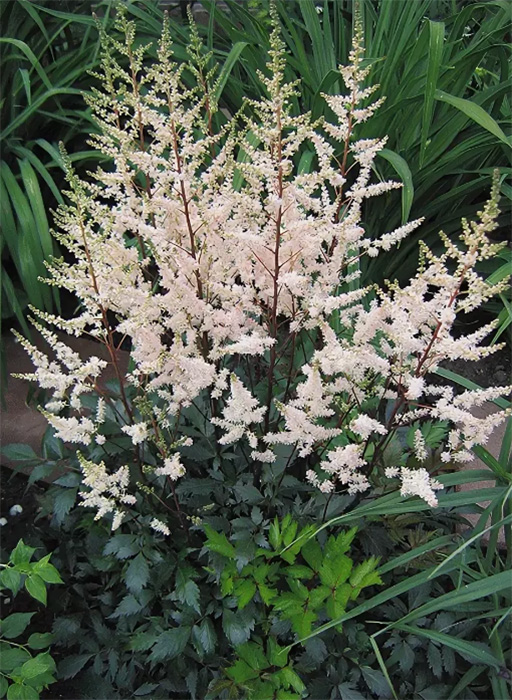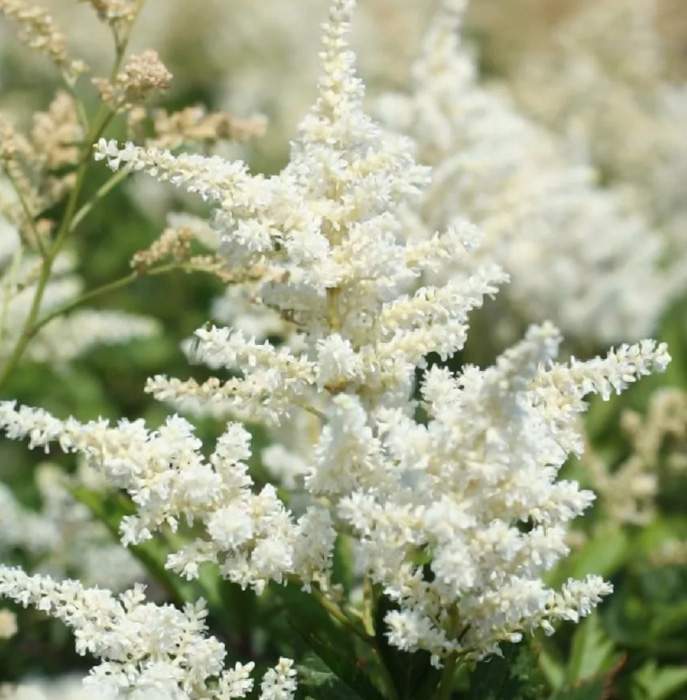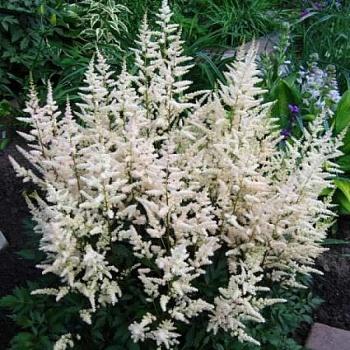Reproduction methods
Breeding a culture is allowed in several ways.
Sowing seeds
Experienced flower growers can try to propagate astilba by seeds, however, you can get healthy full-fledged planting material only through varietal selection, which specialists are engaged in. Before sowing, the grains undergo a stratification procedure in the refrigerator for three weeks. Sowing is done on moistened soil, you do not need to sprinkle it with earth.
Further, the planting site is regularly moistened so that the grains do not dry out. The container where the seedlings are planted must be placed in a bright place, but so that the direct rays of the sun do not fall on it. A favorable temperature for seedlings is +20 degrees Celsius. After about 3 months, young seedlings can be planted in a summer cottage in open ground.
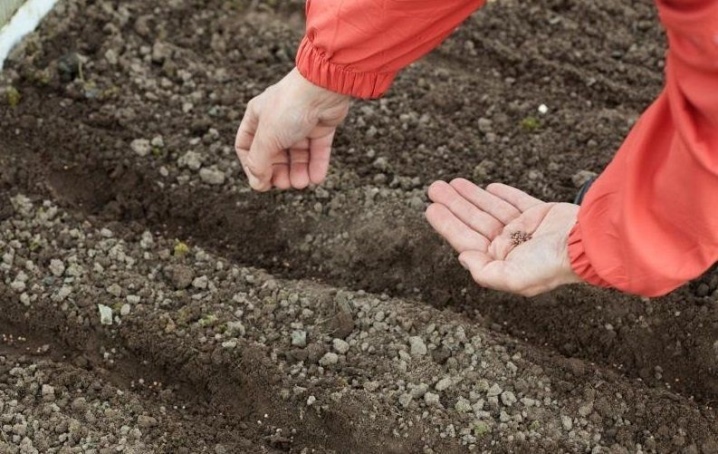
Division
This is the most promising breeding method that even a novice gardener can do. The bottom line is to extract the rhizome from the flower bed and divide it into 2-3 parts so that each part contains the rhizome, adventitious roots and buds. The cut site should be disinfected with garden grease or crushed charcoal to reduce the likelihood of bacteria spreading.
If a shovel is used for separation, then it is not necessary to dig out the bush completely, it is enough to separate part of the rhizome directly in the ground. When using a knife, the entire bush is dug up
It is important to inspect the roots for defects, if necessary, all dead and rotten areas should be eliminated
Further, the separated shoots are immediately planted in moist soil, after which the gardener must ensure constant watering and loosening. The use of additional compounds, for example, a growth stimulant, is allowed.
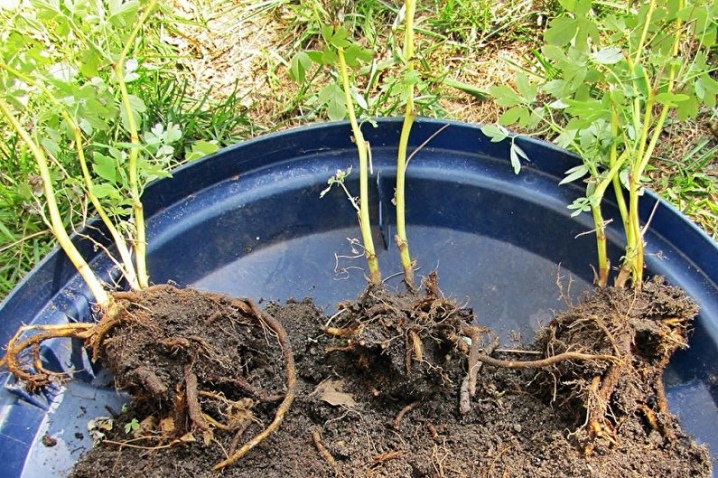
Kidney division
The specimens multiplied by this technology are characterized by good survival rate. The process is carried out in the spring when the buds appear. It is necessary to cut the cuttings, plant them in greenhouse conditions, having well moistened the substrate prepared from earth with sand and gravel in advance. Growing by bud division differs in duration, unlike root - only after a year the plant will stretch to the desired size and delight with its flowering.
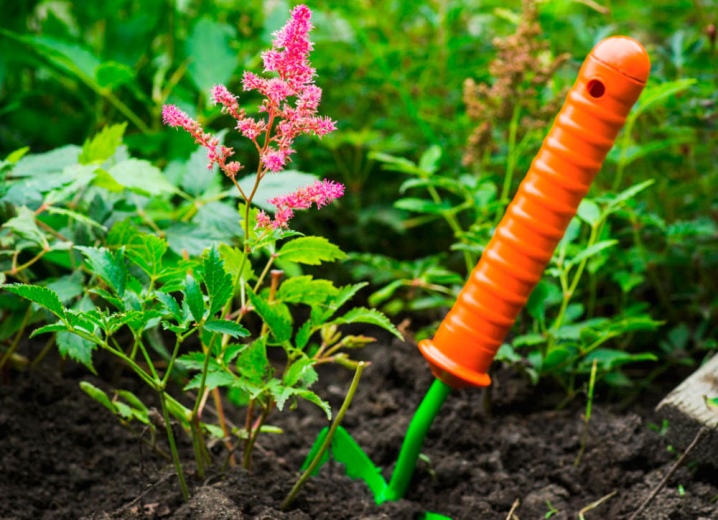
general characteristics
The name "Astilba Arends" unites a large group of cultivars and complex hybrid forms, developed on the basis of experiments with David's Astilba. The beginning of the formation of the species - 1907.
An irreplaceable plant in flower beds
The bushes of perennials are medium or vigorous (up to 1 m), characterized by a spreading shape (more than 50-70 cm in width).
The root system is powerful, branched. Cord-like roots tolerate damage quite easily, and therefore quickly recover after division.
The leaves of this astilbe are bipinnate or triple-pinnate, often with jagged edges. The dominant color is dark green, always with varying degrees of luster.
Perennial flowers are small, traditionally collected in graceful inflorescences. The palette of brushes is extensive: from snow-white, cream tones to rich red or lilac colors.
Flowering peaks in July-August. However, there are earlier and later hybrid varieties that go beyond the specified period. Flowering duration - up to 40 days.
Peculiarities
The life expectancy of Astilba Arends is up to 15 years. The size of the plant, as well as the appearance, largely depend on the variety. On average, the height of the culture is 80-100 cm, although there are varieties that reach sizes up to 2 m.
White fluffy panicles include many small flowers formed on small branches.The duration of flowering is also determined by varietal characteristics; on average, this period is from June to mid-August.
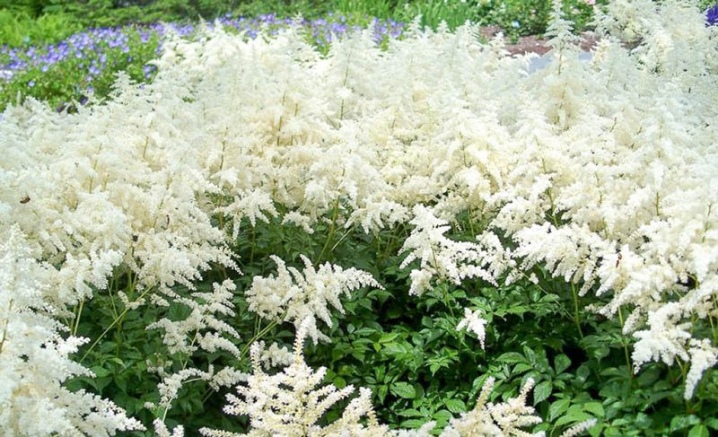
The lightness of the plant is due to the unusual appearance of the leaves. They are openwork, carved, at first painted in a brown shade, in adulthood they turn green, and by autumn they are covered with a reddish tint. The root system is fibrous, massive, tolerates winter well and temperatures up to -35 degrees Celsius. Old roots wither every year, but new buds form on top, from which fresh roots hatch.
Even after flowering, the plant looks very aesthetically pleasing in the garden, and in winter, snow piles, laying on the specimen, form interesting shapes.
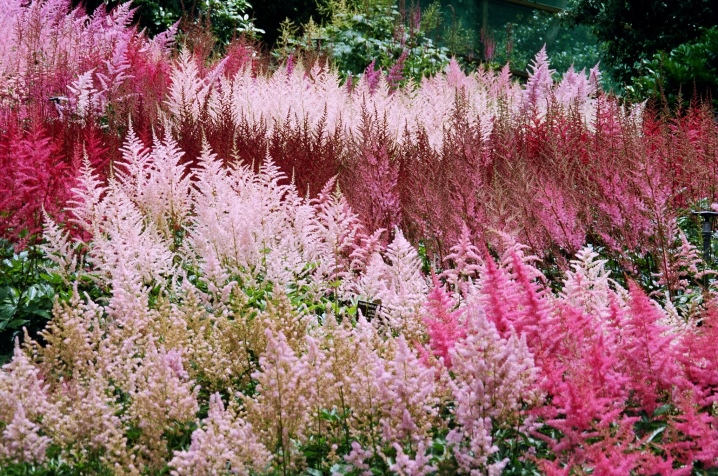
Among Arends's astilba species, there are varieties called false goat and spirea. The first belongs to Asteraceae plants, and spirea is a rosaceous culture. In their appearance, they resemble astilbe, and for this, for the simplicity of the syllable, they can be called by her name.
In nature, this representative of the flora grows in East Asia, Japan, and the USA. It prefers to develop in partial shade, but you can also find the plant at the edge of the forest. This is a moisture-loving flower, which is distinguished by good winter hardiness and high immunity to diseases and pests, but this resistance can only be ensured by observing all the rules of planting and growing.
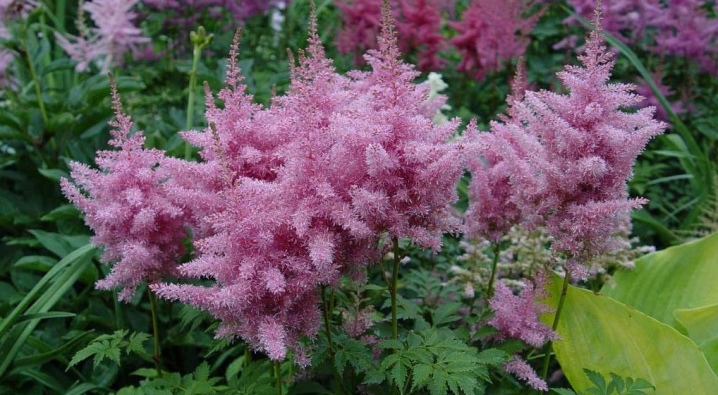
How to take care of it properly?
It is not difficult to look after Arends' astilba, but there are some nuances. Care includes several points.
Watering
The plant should be moistened 2-3 times a week, and after flowering - once a week. To prevent the roots from overheating in the ground from the sun, it is recommended to make a hole around the seedling. Watering is done in the evening. And also experienced gardeners advise once every 2-3 weeks to irrigate the culture with a weak solution of potassium permanganate or fungicide. With the onset of September, the irrigation procedure is completely stopped.
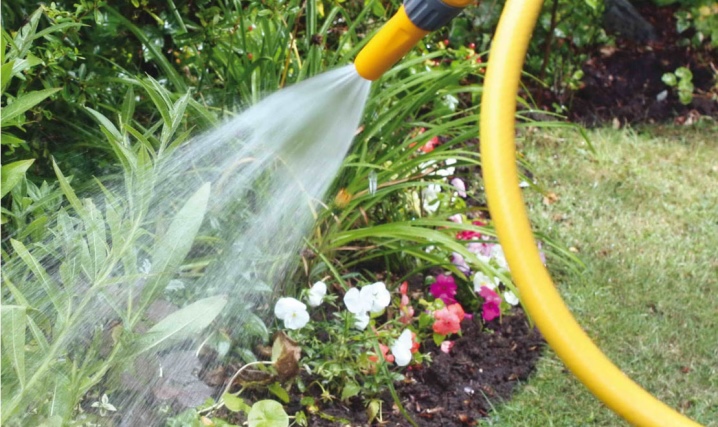
Top dressing
The plant needs fertilization 3-4 times a day. With the formation of a new kidney, you can feed the culture with a complex mixture or a growth stimulator. During the period of flower formation, it is better to give preference to compositions containing phosphorus and potassium - these components are responsible for the colorfulness and abundance of flowering.
The third top dressing is applied only when a weakening of the bush is noticed, more often this is observed in the middle of summer.

Loosening
This is a necessary procedure for astilba, which allows the roots to breathe easily and absorb oxygen. Too dense soil can lead to the death of the rhizome. It is recommended to loosen the flower bed every week.
During loosening, it is important to eliminate all weeds along with the root - they can become a source of disease


Pruning
In the first 2-3 years of life, the plant needs pruning. When clipping, dried, damaged, frozen stems are removed, while leaving 8-10 cm in length. The rest of the areas are pruned before freezing. The whole process is carried out with a well-sanitized instrument.
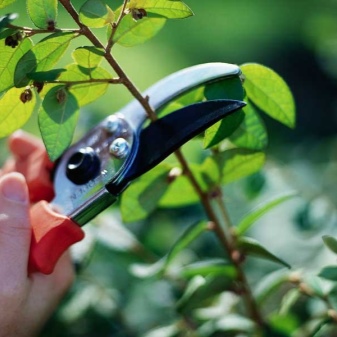

Preparing for winter
Pruning before wintering is a kind of preparation for the cold. It allows you to cover the plant well for the winter. If it did not work out with pruning, it is recommended to insulate the bush in several layers between the stems with sawdust, hay, peat, spruce branches.
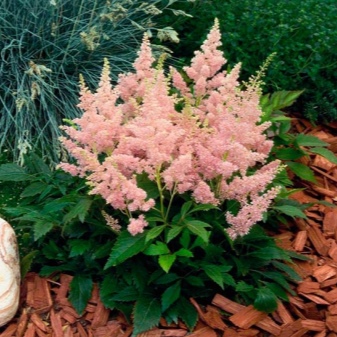

Diseases and pests
Among the most common diseases of the presented culture, root rot, bacterial spotting, and phytoplasma infections are noted. So, rot can be judged by spoiled roots, large black spots will indicate the presence of spotting, and an infection that is already on the purchased seedling may not appear for a long time.
The main method of dealing with these and other ailments is the use of various drugs.
- Bordeaux liquid. This remedy allows you to cope with a fungal infection.
- Copper preparations. An effective remedy for stopping bacterial rot.
- Potassium permanganate solution. It can be used to treat roots where the first signs of rot are observed.
- Insecticides. They fight pests that become a source of spread of diseases.



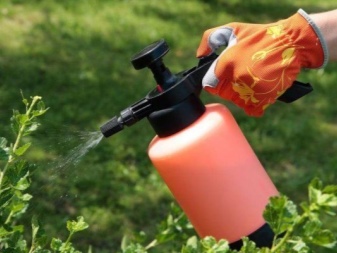
Of insects, the leaf aphid most often loves to feast on astilba, which can be got rid of by tobacco fumigation. Another enemy - the strawberry nematode - easily tolerates industrial preparations, and therefore the bush affected by it should be dug up and destroyed. To protect the culture from the invasion of the strawberry nematode, it is recommended not to plant the plant next to the strawberry garden.
A slobbering penny, which prefers to lay eggs on the leaves, becomes a frequent uninvited guest.
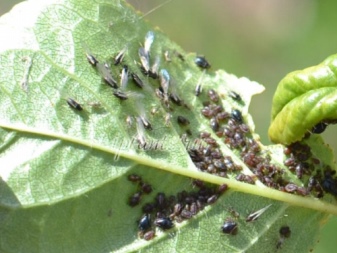

Examples in landscape design
In the first year of life, the culture still cannot take the desired shape and dimensions, and therefore young specimens will look aesthetically pleasing with hazel grouses, crocuses, snowdrops. Adult specimens are harmoniously combined with tenacious animals, umbilicals, lamellas, saxifrage.
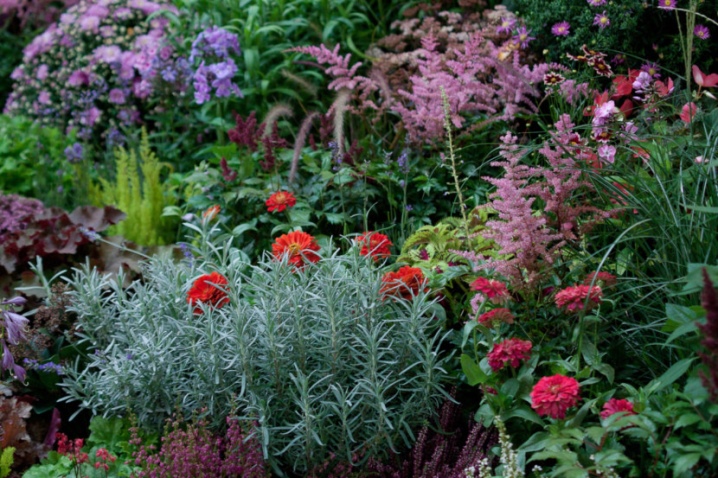
To create a spring composition, the shrub can be planted near the doronicum or rhododendron. If the gardener plans to decorate a garden reservoir, then iris, lungwort, anemone are suitable as aesthetic neighbors. A scenic landscape can be created by planting a crop next to rose bushes, but place flowers in the northern half of the flower bed.
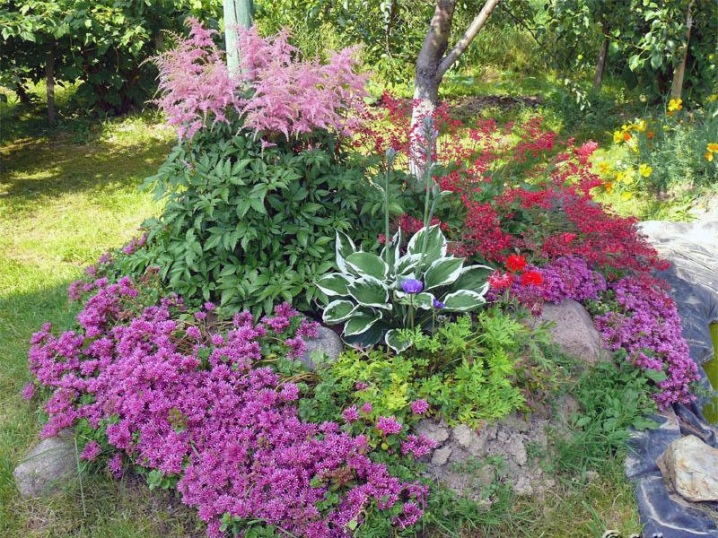
Lush bright panicles look spectacular against the background of large trees or shrubs, for example, juniper, barberry, spirea, and the garden path, framed by impressive bushes, will fill the garden with an atmosphere of magic and fairy tale. Culture looks no less elegant with a single planting.
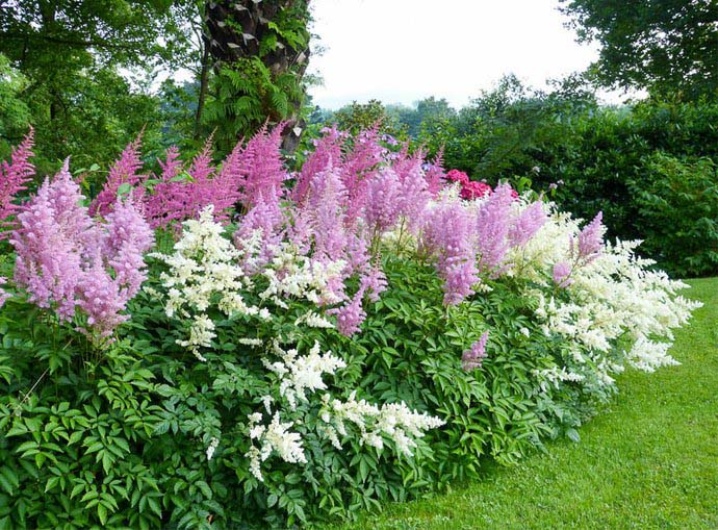
For information on how to care for Arends' astilba, see the video.

